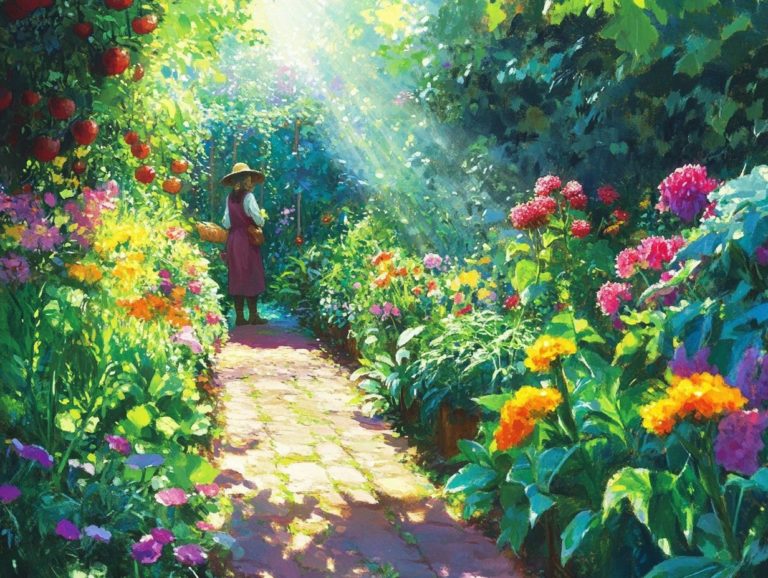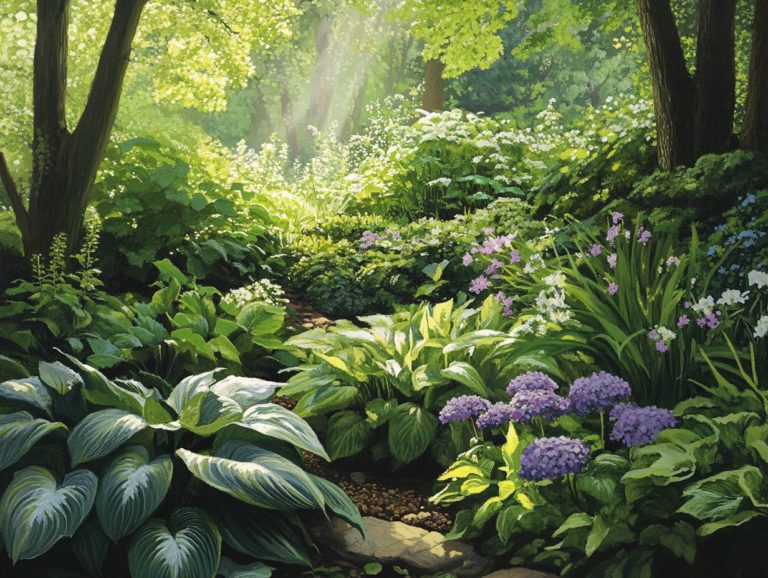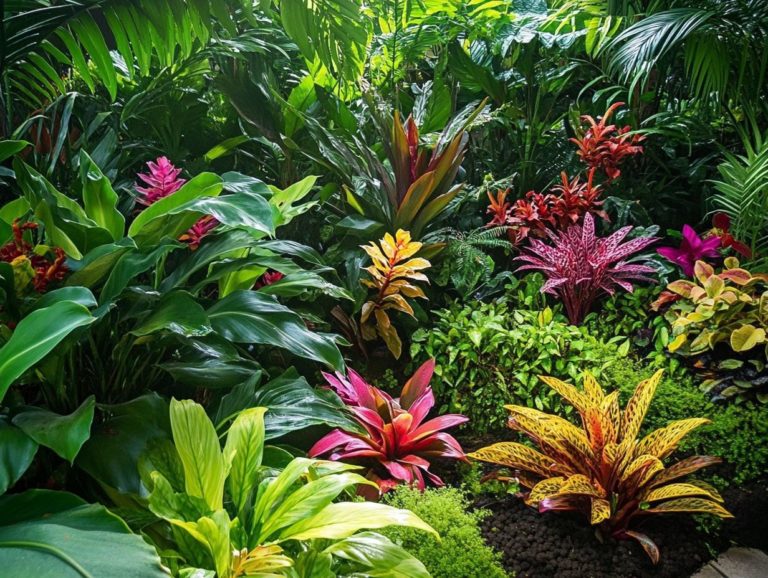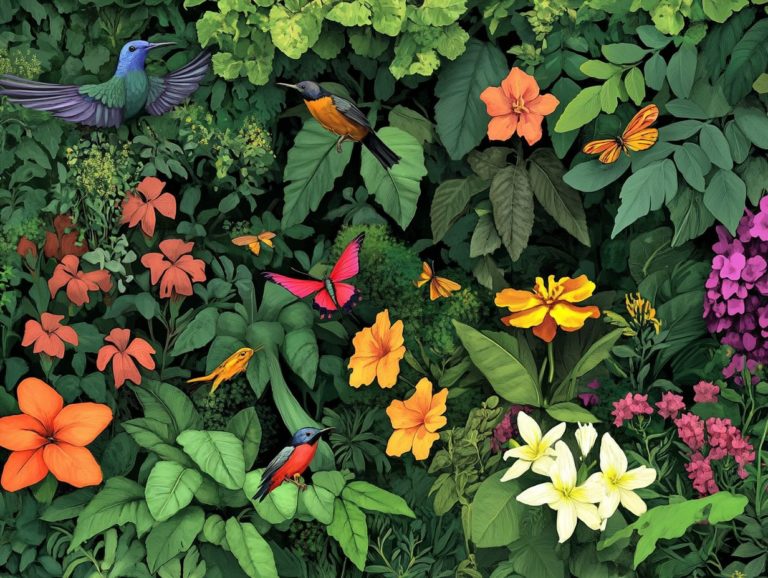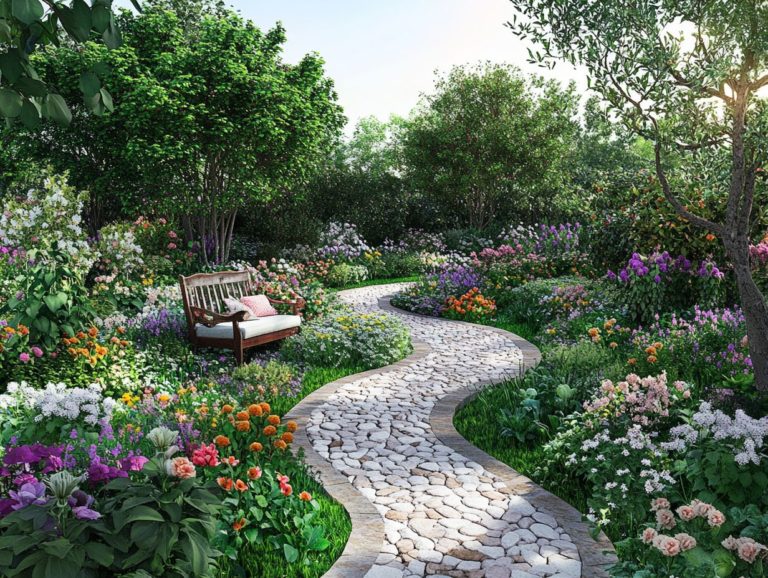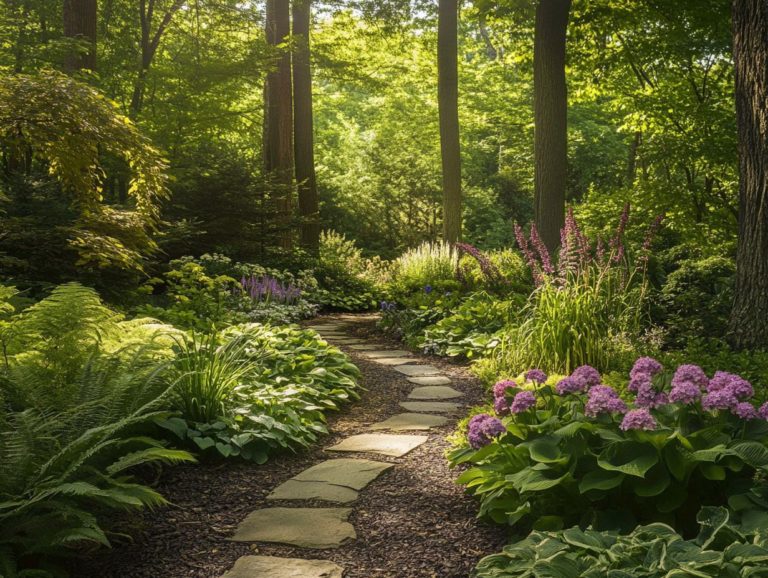“Choosing the Right Plants for Your Garden Zone”
Start your gardening journey today by choosing the right plants! Choosing the right plants for your garden can transform your outdoor space into a thriving oasis.
Understanding garden zones is key to a successful garden, as they determine which plants will thrive in your specific climate and conditions.
This guide delves into the significance of garden zones, the key factors to consider when selecting your plants, and the best types of greenery suited for your area.
You’ll also discover invaluable tips for successful planting and maintenance, ensuring that your garden grows well throughout the year.
Contents
- Key Takeaways:
- Understanding Garden Zones
- Factors to Consider When Choosing Plants
- Types of Plants for Different Garden Zones
- Tips for Successful Planting in Your Garden Zone
- Frequently Asked Questions
- What is a garden zone?
- How do I know my garden zone?
- Why is it important to choose plants for my specific garden zone?
- Can I still grow plants from a different garden zone in my garden?
- What factors should I consider when choosing plants for my garden zone?
- Are there any resources available to help me choose the right plants for my garden zone?
Key Takeaways:
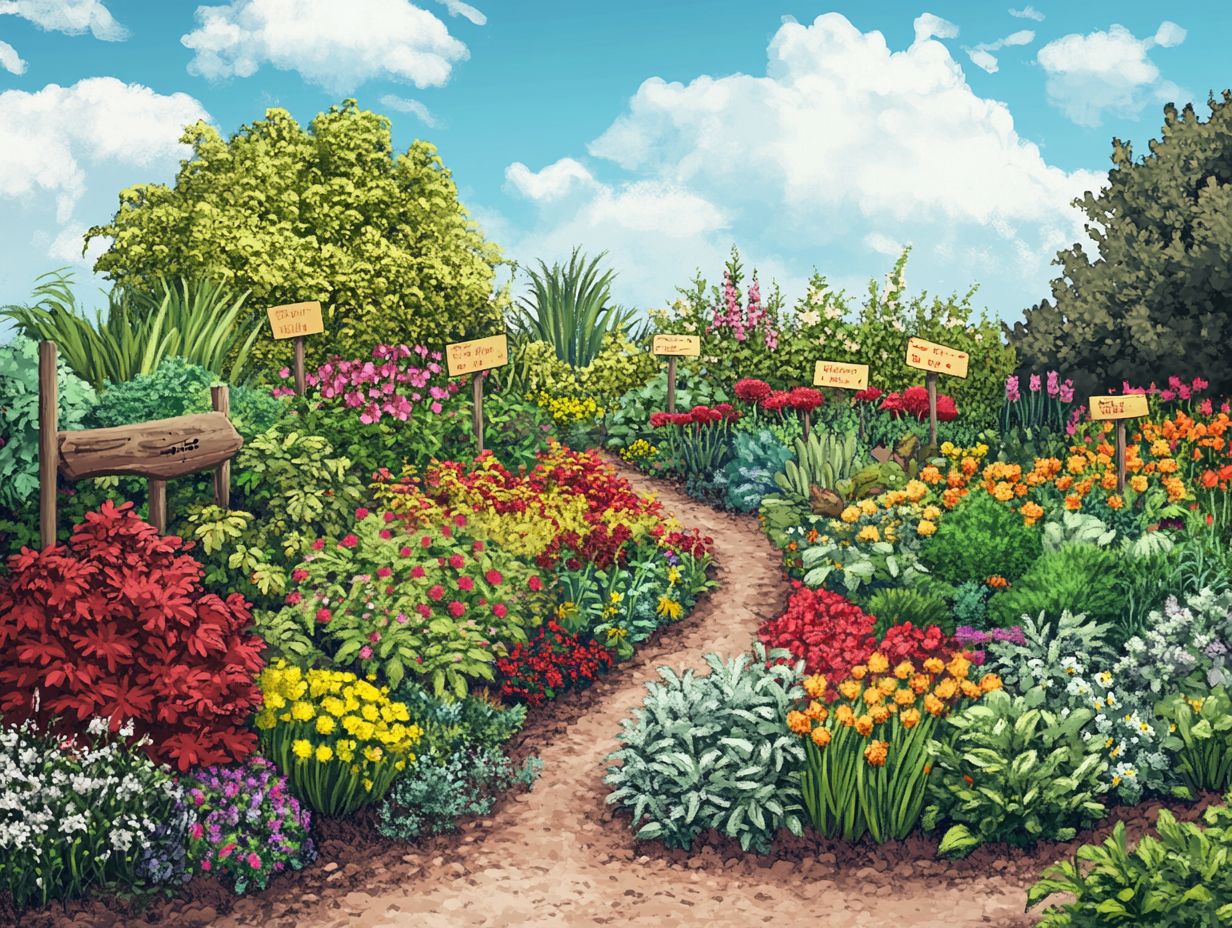
- Properly understanding your garden zone is crucial for successful plant selection.
- Climate, soil, and sunlight are important factors to consider when choosing plants for your garden zone.
- Different plant types, such as shrubs, flowers, and vegetables, thrive in different garden zones.
Understanding Garden Zones
Garden zones, also known as hardiness zones, help you understand which plants can survive in your area based on temperature. Grasping this concept is essential for your gardening success, particularly in Arkansas, due to the diverse ecosystems that thrive in this southern state.
The USDA Plant Hardiness Zone Map classifies regions according to their climate conditions, enabling you to select the right plants for your local environment. Elements like average minimum temperature, planting season, and unique weather patterns play an important role in the significance of garden zones, allowing you to make well-informed decisions for a flourishing harvest.
What are Garden Zones and Why are They Important?
Garden zones, commonly known as hardiness zones, are essential in determining which plants can flourish in various climates key to achieving a thriving garden.
These zones are categorized mainly by temperature ranges, serving as a guide for you to select the most suitable flora for your specific region. Understanding your garden zone is vital, as it directly impacts plant survival rates and the overall health of your garden.
Choosing plants that match local climate conditions increases your chances of success. This knowledge not only aids in effective planting strategies but also reduces resource wastage, ensuring that your selected plants thrive and enhance the beauty of your landscape.
Factors to Consider When Choosing Plants
When selecting plants for your garden, several essential factors demand your attention. Consider the local climate, soil type, and moisture levels, as each element plays an important role in determining the growth and survival of your chosen plants.
Climate and Temperature
Climate and temperature are the cornerstones of your gardening success, shaping the planting season and determining which plants will grow well in your particular locale.
In Arkansas, you ll find a broad climate spectrum humid subtropical in the south and temperate in the north each offering its own set of challenges and opportunities for the careful gardener. Average temperatures can swing dramatically, with mild January winters hovering around 30 F and scorching summer days that can climb into the 90s F. These fluctuations create distinct seasonal weather patterns that play an important role in your planting decisions.
By grasping the timing of the last frost in spring and the first frost in fall, you can ensure optimal growth for both annuals and perennials. This knowledge enables you to select your plant varieties judiciously and schedule your sowing for the absolute best outcomes.
Soil Type and Quality
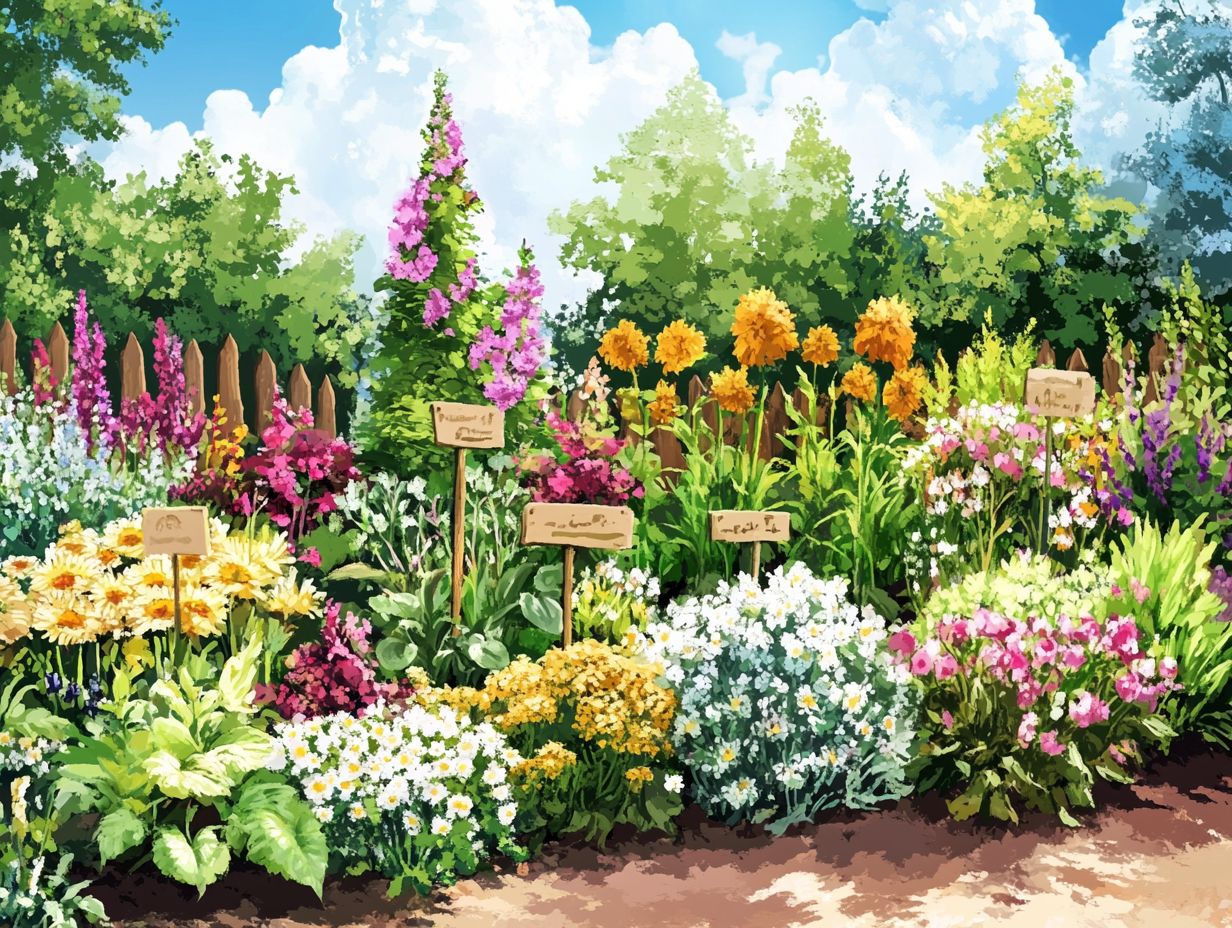
Soil type and quality play vital roles in determining your plants’ growth and health. If you re dealing with heavy soils, you ll often need to add certain materials to create optimal gardening conditions.
Understanding the various soil types found throughout Arkansas can significantly enhance your gardening success. For instance, clay soils, common in many areas, retain moisture but can become compacted, which may hinder root development.
On the other hand, sandy soils provide excellent drainage but might require more frequent watering and nutrient supplementation.
To ensure your plants thrive, it s essential to assess your soil quality by testing pH levels a measure of how acidic or alkaline your soil is and nutrient composition. This information will guide you on the necessary amendments, whether it s compost or fertilizers.
Local extension offices offer great resources, providing valuable testing services and advice for improving soil conditions. Don t wait! Test your soil now to ensure your plants get the best start.
By fostering a healthier relationship between your soil and plants, you’ll enhance their overall vitality and growth.
Sunlight and Shade
The amount of sunlight and shade your garden receives is crucial for plant growth, determining which species can thrive and how to plan for a successful garden.
By understanding sunlight exposure, you can make informed decisions that ensure each plant not only survives but truly flourishes. It s vital to assess light patterns throughout the day and consider the changing seasons, as these can significantly influence your garden’s microclimate.
When selecting plants, be mindful of their specific light requirements whether they crave full sun, prefer partial shade, or thrive in full shade. This awareness allows you to create a harmonious layout.
In areas with varying sunlight, mix species with complementary needs. Place sun-loving flowers at the forefront while shade-tolerant ground covers fill in the darker corners.
Such thoughtful arrangements not only enhance biodiversity but also elevate the visual appeal of your garden.
Types of Plants for Different Garden Zones
Different garden zones accommodate a diverse array of plants, including shrubs, trees, flowers, perennials, vegetables, and herbs, each meticulously adapted to thrive in their unique climate conditions and soil types.
Shrubs and Trees
Choosing the right shrubs and trees is crucial for establishing a resilient garden that flourishes in the unique climate of Arkansas and soil conditions.
By selecting appropriate species, you’ll create stunning landscapes that enhance local biodiversity and provide essential habitat for wildlife. In Arkansas, native shrubs like beautyberry and serviceberry adapt remarkably to the region’s varying moisture levels while offering stunning seasonal displays.
Trees such as the bald cypress and redbud capture the essence of the state’s flora, providing both shade and beauty with minimal maintenance.
For optimum success, exploring local nurseries can be incredibly advantageous, as they often carry plants tailored for specific growing conditions. This ensures that each selection contributes positively to the overall health and resilience of your garden.
Flowers and Perennials
Flowers and perennials are essential elements of your garden, offering a tapestry of color and texture while promoting biodiversity and attracting beneficial pollinators.
In Arkansas, choosing the right varieties is crucial, as the state features diverse gardening zones, each with its own unique challenges and opportunities. By understanding the specific maintenance needs and adaptability of these plants, you can craft vibrant spaces that thrive throughout the year.
Embracing seasonal planting maximizes growth and allows for a staggered bloom, ensuring you can revel in continuous color and delightful fragrance.
Selecting native varieties enriches local ecosystems, providing habitats for wildlife, conserving water, and minimizing the need for chemical fertilizers and pesticides. Therefore, your choice of flowers and perennials transcends mere aesthetics; it transforms your garden into a sustainable haven.
Vegetables and Herbs
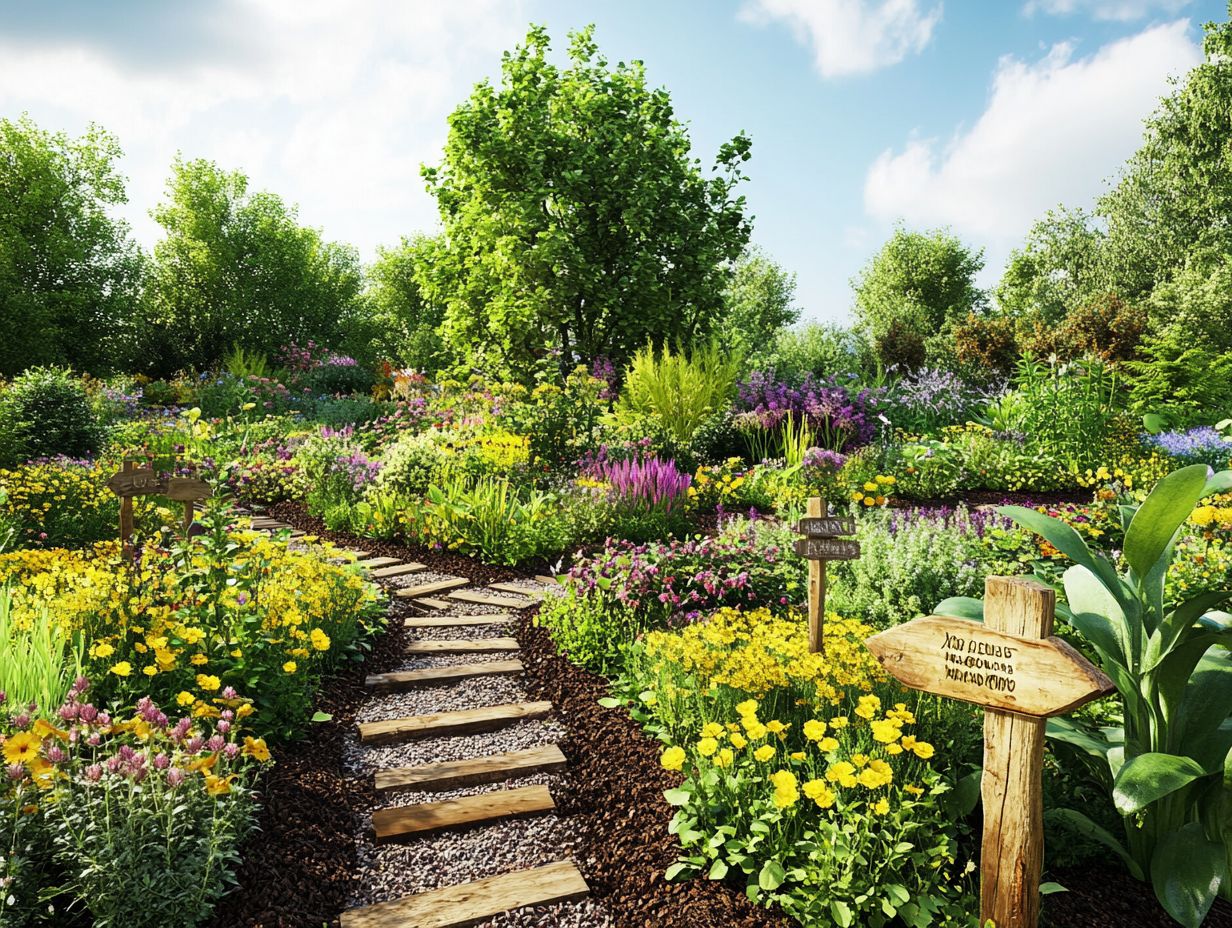
Growing your own vegetables and herbs is not only a fulfilling endeavor; it is crucial for achieving a successful harvest. Understanding the optimal planting seasons for your specific garden zone is paramount.
By getting to know the unique climate conditions of Arkansas, you can optimize your yields and ensure your plants thrive. Popular vegetables like tomatoes, peppers, and cucumbers flourish during the warmer months, while leafy greens such as spinach and lettuce prefer cooler temperatures.
Timing is everything. Sow seeds in early spring for a summer bounty or in late summer for a delicious fall crop. Using local extension services provides valuable insights into soil conditions and pest management, making your journey to cultivate a bountiful garden easier.
Tips for Successful Planting in Your Garden Zone
To cultivate a successful gardening experience, embrace effective planting tips tailored to your specific garden zone. This includes selecting the right plants and mastering the proper care and maintenance techniques that will ensure your garden thrives.
Proper Care and Maintenance
Proper care and maintenance are essential for cultivating a flourishing garden, as they significantly influence plant health and the potential for a bountiful harvest.
To ensure that each plant thrives, regular watering is crucial, especially during warm months when the soil tends to dry out quickly. A simple way to assess moisture levels is to stick your finger into the soil; if it feels dry an inch down, it’s time to bring out the watering can. Incorporating organic fertilizers is key in supplying your plants with necessary nutrients, leading to robust growth and stunning blooms.
Don t overlook pest management. Natural solutions like introducing beneficial insects or making homemade sprays can effectively shield your garden from unwanted invaders while preserving the delicate ecosystem.
By focusing on these practices, you’ll boost your plants’ resilience and enhance the overall aesthetic appeal of your garden.
Dealing with Common Issues
Handling common gardening issues like pests, diseases, and environmental challenges requires a blend of knowledge and proactive strategies to ensure your plants thrive.
In Arkansas, you might face unique hurdles, such as the state s humid summers and unpredictable weather patterns. These can create problems, from pesky fungal infections to an invasion of pests that flourish in warm conditions.
Equip yourself with effective strategies like crop rotation, which is the practice of planting different crops in the same area in sequential seasons to improve soil health, and integrated pest management, which uses natural methods to keep pests away. Consulting local gardening experts can offer invaluable insights tailored to your region, helping you identify and address specific issues confidently.
Utilizing resources like community gardens and extension services can provide you with the tools and support necessary to cultivate thriving plants.
Frequently Asked Questions
What is a garden zone?
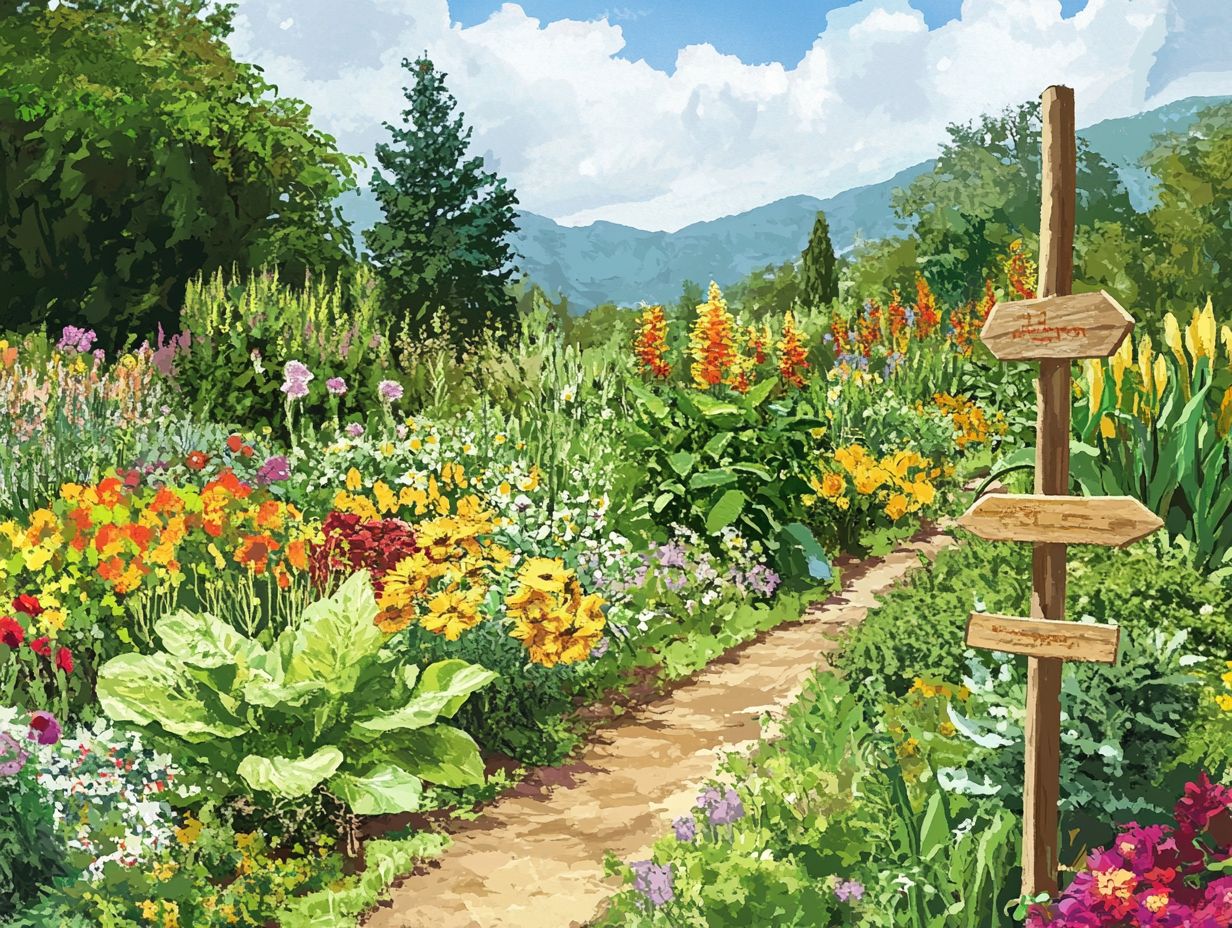
A garden zone, also known as a plant hardiness zone, is a geographical area defined by its climate and temperature range. It is used to determine which plants will thrive in a specific location.
How do I know my garden zone?
You can find your garden zone by using a plant hardiness zone map, which divides the United States into 13 different zones based on average annual minimum temperatures.
Why is it important to choose plants for my specific garden zone?
Choosing plants suitable for your garden zone ensures that they can withstand the climate and temperatures in your location, resulting in healthier and more successful plants.
Can I still grow plants from a different garden zone in my garden?
While it is possible to grow plants from a different garden zone in your garden, they may not thrive as well as plants native to your specific zone. It is best to choose plants recommended for your garden zone.
What factors should I consider when choosing plants for my garden zone?
When selecting plants, think about their hardiness. Consider how much sun and shade they need, their water requirements, and the type of soil they thrive in.
Don’t forget to check the size and maintenance needs of the plants. This helps ensure they fit well in your garden.
Are there any resources available to help me choose the right plants for my garden zone?
Absolutely! You can find many helpful tools online. Plant hardiness zone maps and gardening guides show which plants will flourish in your area.

